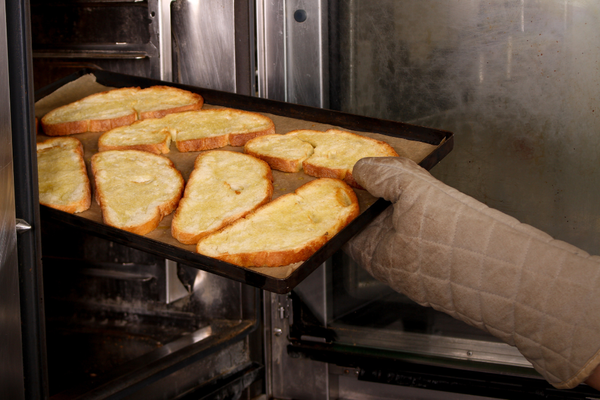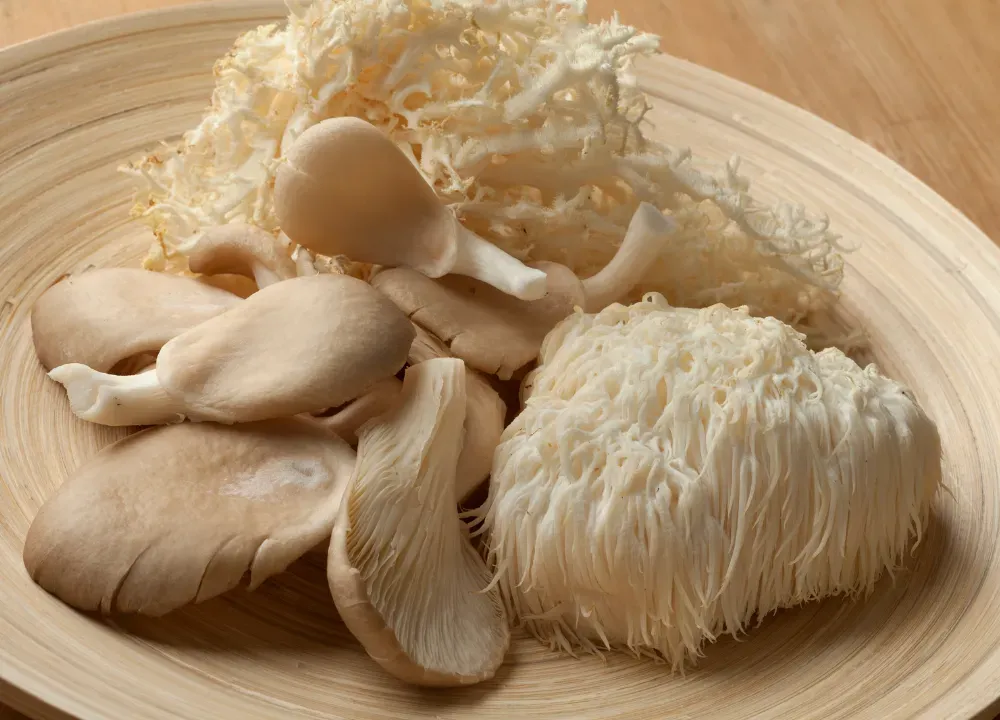
I. Introduction
A. Brief overview of Lion's Mane Mushroom
Lion's Mane Mushroom, scientifically known as Hericium erinaceus, is a unique type of edible fungus gaining popularity in both culinary and health circles. It stands out for its distinctive appearance, resembling a white, cascading mane, hence the name 'Lion's Mane.' Native to North America, Europe, and Asia, this mushroom grows on hardwood trees, particularly American Beech.
Its taste is often likened to seafood, specifically lobster or crab, and it's used in a variety of dishes, from soups to stir-fries. In addition to its culinary appeal, Lion's Mane is also recognized for its potential health benefits.
B. Benefits of Lion's Mane Mushroom
Lion's Mane Mushroom is touted for its medicinal properties, particularly its neuroprotective effects. Research indicates that compounds within Lion's Mane, such as hericenones and erinacines, may stimulate the growth of brain cells and have potential benefits in treating neurological disorders.
Studies suggest that Lion's Mane may help improve memory and concentration, reduce inflammation, and help with symptoms of anxiety and depression. It's also rich in antioxidants, which can help to support overall immune health.
However, while these potential health benefits are promising, it's important to note that more extensive human studies are needed to fully understand the medicinal effects and potential side effects of Lion's Mane Mushroom.
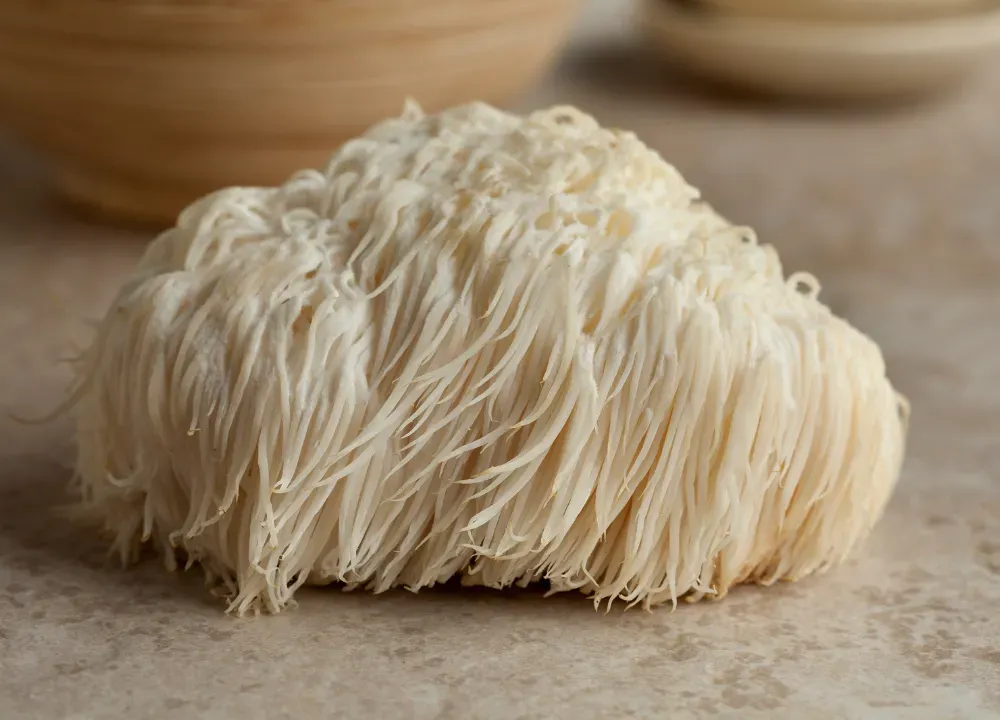
II. What is Lion's Mane Mushroom?
A. Appearance and taste
Lion's Mane mushroom, scientifically known as Hericium erinaceus, is quite distinct in its appearance and taste.
Appearance: The Lion's Mane mushroom is characterized by its unique, cascading, icicle-like appearance that gives it an uncanny resemblance to a white Lion's Mane. This is why it's often referred to as the 'bearded tooth fungus' or 'pom pom mushroom.' It typically grows on hardwood trees and can reach a significant size, sometimes up to a foot in diameter.
Taste: When it comes to flavor, Lion's Mane mushrooms offer a mildly sweet flavor and a tender texture that's often likened to seafood, specifically lobster or crab. The consistency when cooked is slightly chewy, adding to this seafood-like comparison. Some even describe the flavor as reminiscent of scallops cooked with butter and garlic. This unique taste profile makes Lion's Mane a versatile ingredient in the kitchen, suitable for various dishes.
B. Nutritional Benefits of Lion's Mane Mushroom
Lion's Mane mushrooms are not just unique in appearance and taste, but they also pack a punch when it comes to nutrition.
Nutrient Profile: A 100g serving of Lion's Mane provides approximately 35 calories, with 7g of carbohydrates and about 2.4 grams of protein. It's also a good source of dietary fiber.
Vitamin and Mineral Content: Lion's Mane mushrooms are rich in vitamins such as thiamine, riboflavin, and niacin. It's believed to be a rich source of potassium, zinc, iron, and selenium.
Antioxidant Properties: These mushrooms also possess antioxidant properties. Antioxidants help protect the body from damage caused by harmful molecules known as free radicals.
Amino Acids: Lion's Mane is high in essential amino acids, which are the building blocks of proteins. These amino acids are necessary for various bodily functions, including muscle growth and repair, immune function, and the production of enzymes and hormones.
Incorporating Lion's Mane into your diet can provide these nutritional benefits and promote a balanced, healthy lifestyle.
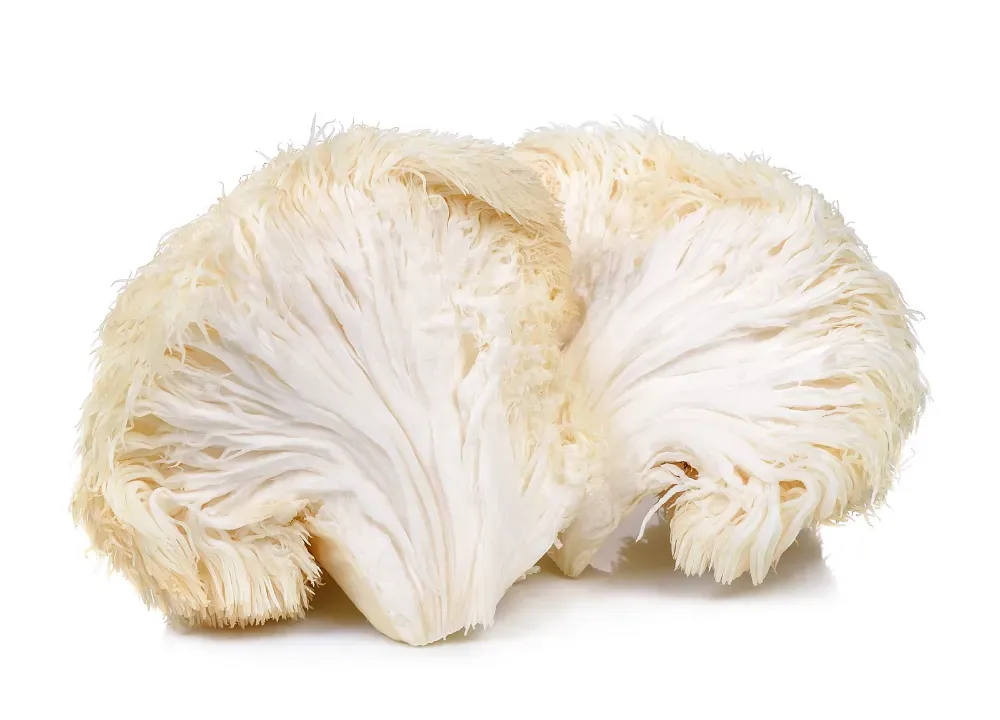
C. Medicinal Properties of Lion's Mane Mushroom
Lion's Mane mushrooms are known for their unique appearance and nutritional value and have also been recognized for their medicinal properties, particularly in traditional Chinese medicine.
Neuroprotective Effects: Research indicates that Lion's Mane may protect against dementia and other neurodegenerative diseases. It contains two special compounds, hericenones, and erinacines, which can stimulate the growth of brain cells. Animal studies suggest that Lion's Mane mushrooms can help improve memory and reduce symptoms of Alzheimer's disease.
Mental Health Benefits: Lion's Mane mushrooms may also have mental health benefits. Some research suggests they can help reduce mild symptoms of anxiety and depression. They could potentially boost mood and concentration, although more studies are needed to confirm these effects.
Immune System Support: Lion's Mane mushrooms may boost the immune system, helping the body fight off illness and disease. They are rich in antioxidants, which can protect against cellular damage and reduce inflammation.
Digestive Health: These mushrooms may support digestive health by reducing inflammation and preventing the growth of harmful bacteria in the gut. There's also some evidence that they may help manage the symptoms of digestive conditions like gastritis.
It's important to note that while the medicinal benefits of Lion's Mane are promising, more research is needed, especially in humans. Always consult a healthcare professional before starting any new supplement regimen.
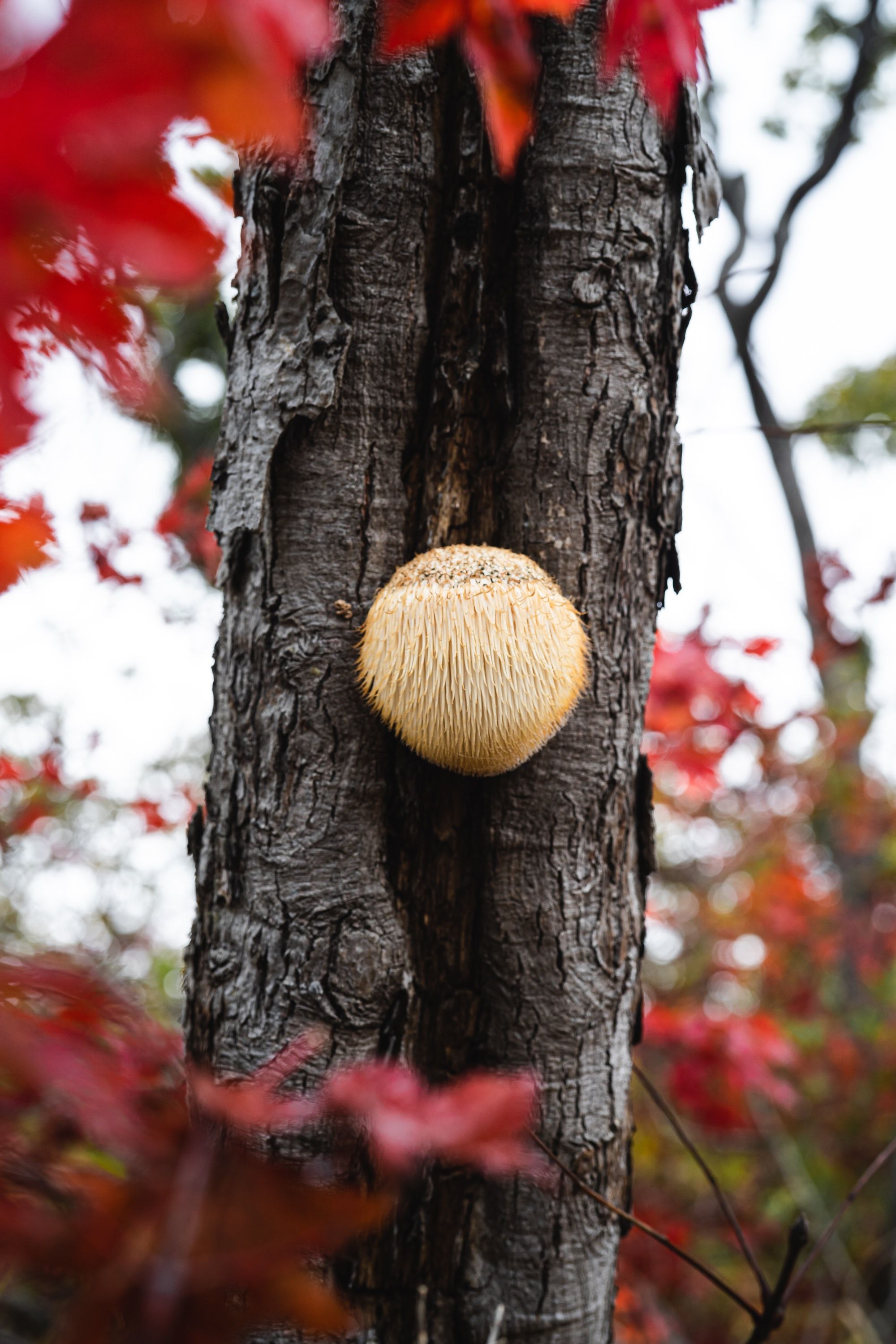
III. Growing Lion's Mane Mushroom
A. Lion's Mane Growing Kits
Cultivating Lion's mane mushrooms has never been easier, with many options available. Lion's Mane growing kits are an excellent way for beginners to start cultivating their own Lion's mane mushrooms at home. They typically include a fully colonized substrate, which is ready to start fruiting mushrooms. Here are some details about a few popular Lion's Mane growing kits:
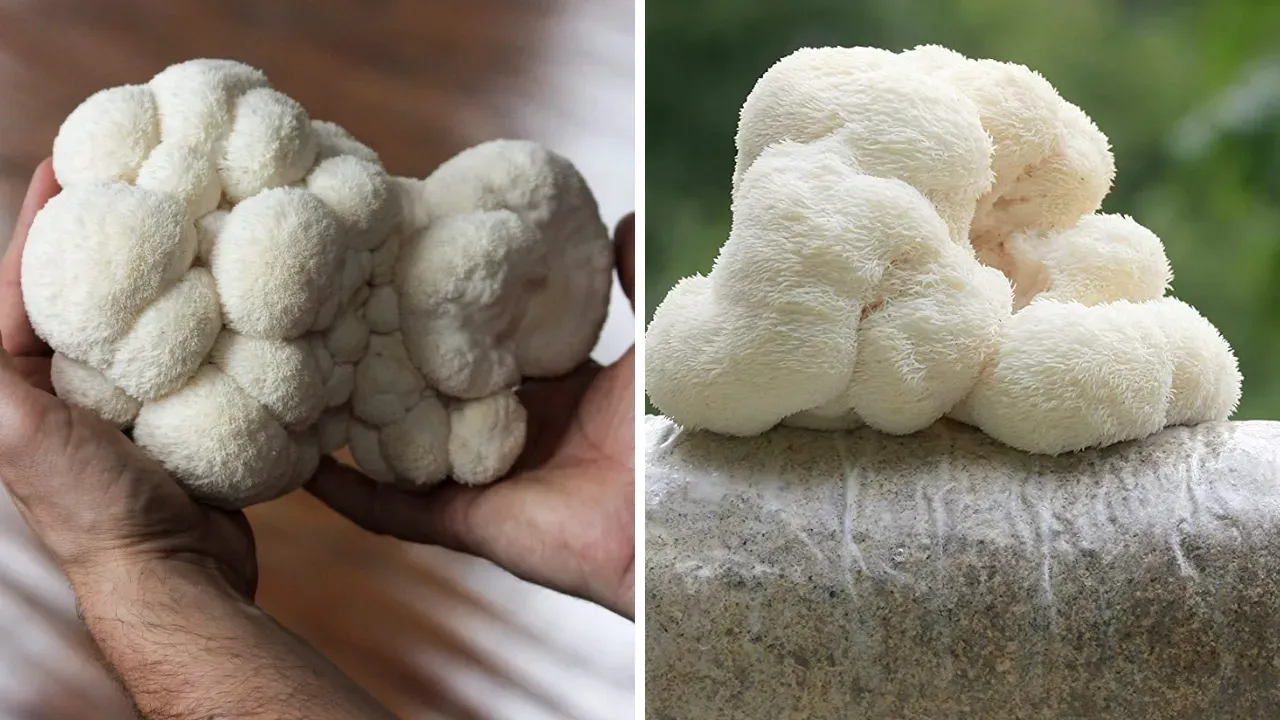
B. Choosing the right substrate
Choosing the right substrate is essential when growing Lion's Mane mushrooms, as it provides the necessary nutrients for the fungi to grow and thrive.
Hardwood Substrates: Lion's Mane mushrooms naturally grow on hardwood trees, so a hardwood-based substrate is usually the best choice. This could be hardwood sawdust or hardwood pellets. Some growers also use a blend of hardwood sawdust and soy hulls, known as the Master's Mix.
Straw: Sterilized straw can also be used as a substrate for growing Lion's Mane mushrooms. However, this may not yield as many mushrooms as a hardwood-based substrate.
Bran: Bran can be added to the substrate to provide additional nutrients. When using hardwood pellets, adding bran to the mix can enhance the growth of your Lion's Mane mushrooms.
Preparation: Before inoculating your substrate with Lion's Mane spores, it's important to sterilize it. This can be done by pressure cooking, steaming, or baking. The goal is to kill off any potential contaminants that could compete with your mushrooms for resources.
Remember, each type of substrate will yield different amounts of mushrooms, so you might want to experiment with different types to see which works best for you.
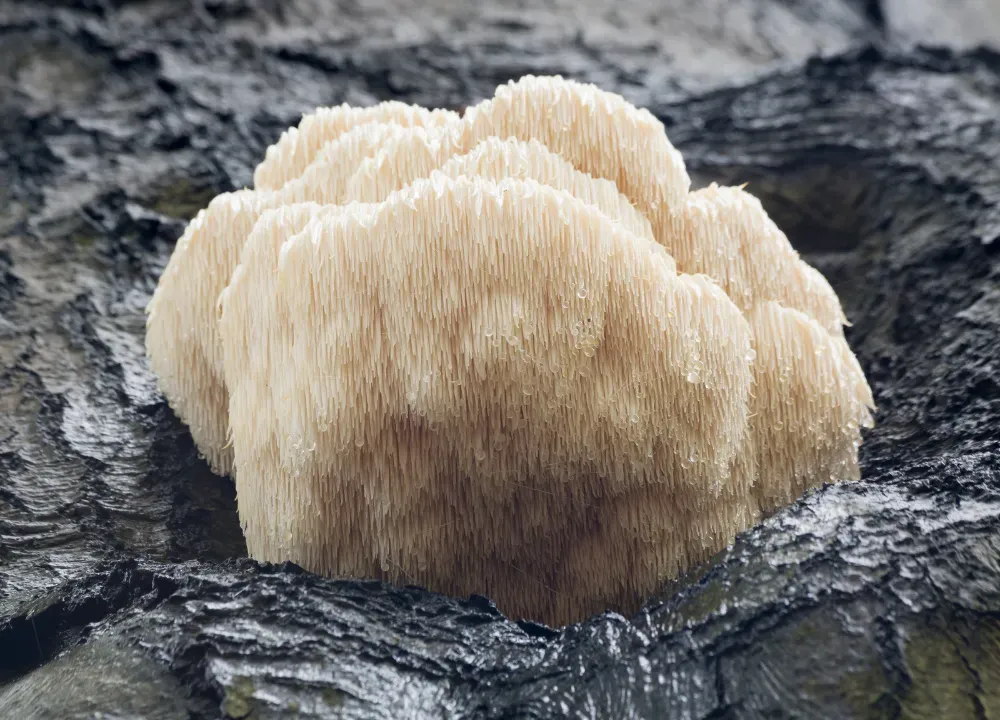
C. Preparing the Substrate for Lion's Mane Cultivation
Preparing your substrate correctly is crucial to grow Lion's mane mushroom successfully. It provides the necessary nutrients and environment for the fungi to grow. Here's a step-by-step guide on how to do it:
1. Choose Your Substrate: Lion's Mane mushrooms naturally grow on hardwood trees, so a hardwood-based substrate is usually the best choice. This could be hardwood sawdust or hardwood pellets. A popular choice among growers is a blend of hardwood sawdust and soy hulls known as the Master's Mix.
2. Hydrate Your Substrate: Before sterilizing, you'll need to hydrate your substrate. The easiest way to do this is by soaking your chosen substrate in water. The goal is to achieve a moisture content of around 60-65%. For the Master's Mix, it's often a ratio of 1 part water to 1 part mix.
3. Sterilize Your Substrate: After hydration, the substrate needs to be sterilized to kill any potential contaminants. This can be done through autoclaving, pressure cooking, or baking in an oven. Typically, pressure cooking at 15 PSI for 2 hours is sufficient.
4. Cool Down: Once sterilized, allow your substrate to cool down before introducing the spawn. This prevents the heat from killing the mushroom mycelium.
5. Inoculation: In a clean environment, to avoid contamination, add the Lion's Mane spawn to the cooled, sterilized substrate. Aim for a spawn rate of around 10-15%.
6. Incubation: Seal your substrate and spawn mixture in a breathable bag or container, and leave it in a warm, dark place to incubate. The mycelium will start to colonize the substrate over the next few weeks.
Remember, cleanliness is key during this process. Any contamination can hinder the growth of your mushrooms or lead to the growth of unwanted organisms.
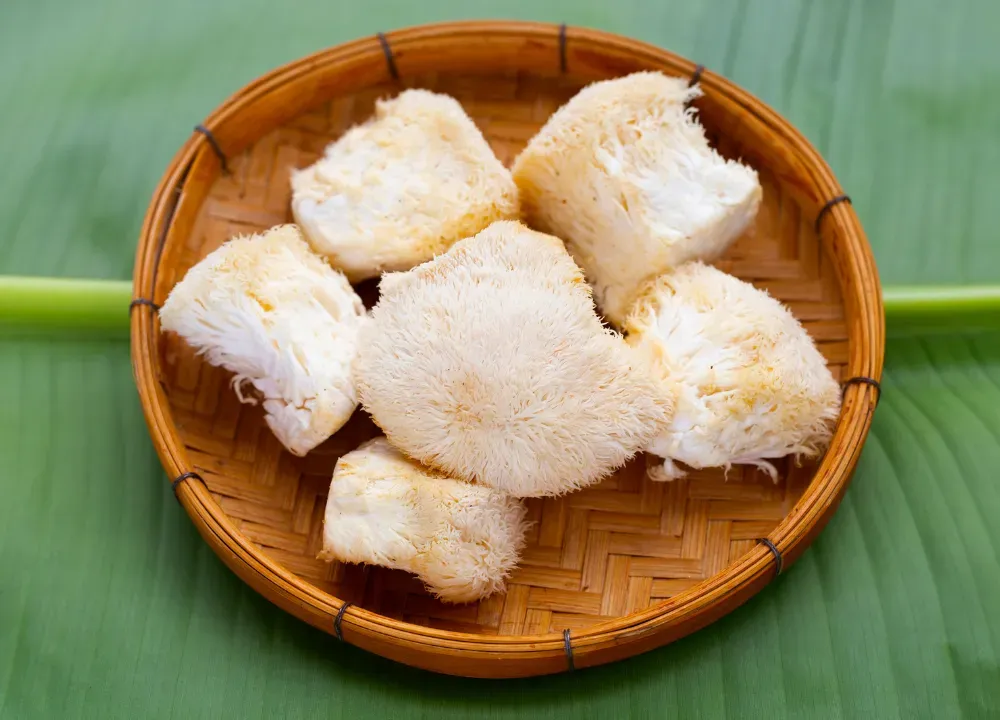
D. Optimal growing conditions
Growing Lion's Mane mushrooms at home can be a rewarding experience, but it does require specific conditions to ensure optimal growth. Here are some key factors to consider:
Temperature: The ideal temperature for growing Lion's Mane ranges between 15°C and 30°C (60°F - 85°F). However, the temperature should not remain constant throughout the growth process. Lion's Mane requires a fluctuation of around 6-10°F to form growing clusters.
Humidity: High humidity is crucial for mushroom growth. Maintaining a humidity level of around 95% during the spawn run and pinning stages is advised. During fruiting, it can be reduced slightly to about 85-90%.
Substrate: Lion's Mane mushrooms grow best on supplemented hardwood sawdust. Adding wheat bran at a rate of 10-20% can enhance their growth.
Fresh Air Exchange: Good air circulation is important for healthy mushroom growth. Stale air can lead to slow growth and poor yield.
Lighting: While mushrooms aren't plants and don't require light for photosynthesis, a small amount of light can help guide growth direction. Indirect sunlight or a simple fluorescent bulb should suffice.
Remember, these conditions may vary slightly depending on your specific setup and environment. It's always a good idea to closely monitor your mushrooms' progress and adjust conditions as necessary.
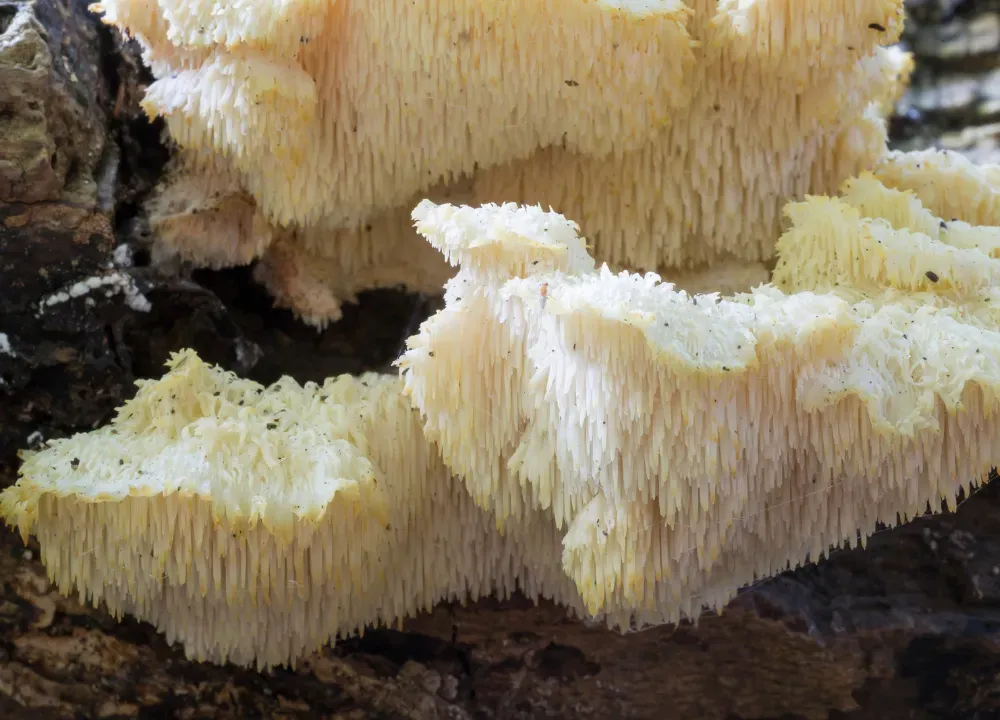
IV. Harvesting Lion's Mane Mushroom
A. Signs for harvesting
Knowing when to harvest your Lion's Mane mushrooms is crucial for ensuring the best taste and texture. Here are some signs to look out for:
1. Size and Shape: Lion's Mane mushrooms are typically ready to harvest when they have grown large, and the edges of their cascading tendrils start to flatten out but are still rounded.
2. Teeth Development: Another sign that Lion's Mane mushrooms are ready to harvest is when the 'teeth' or spines have clearly formed and are about 1/4 to 1 inch long.
3. Color Change: Lion's Mane mushrooms will begin to turn yellow as they age. It's best to harvest them before this color change happens to ensure optimal flavor.
4. Time Frame: Depending on the growing conditions, Lion's Mane mushrooms can generally be ready to harvest between 5 to 10 days after the first signs of growth appear.
When harvesting, it's recommended to use a sharp knife to cut the mushroom at its base, where it first emerged from the substrate.
Remember, the precise timing can vary depending on the specific conditions in which your mushrooms are growing. Always keep an eye on your mushrooms' development to determine the best time to harvest.
B. Picking and preserving properly
Picking Lion's Mane Mushrooms
Knowing when and how to pick Lion's Mane mushrooms is crucial for ensuring the best quality and taste. Here are some tips:
- Timing: Lion's Mane mushrooms are typically ready to harvest when they have grown large, and the edges of their tendrils start to flatten out but are still rounded. Another sign is when the 'teeth' or spines have clearly formed and are about 1/4 to 1 inch long.
- Method: When harvesting, it's recommended to use a sharp knife to cut the mushroom at its base, where it first emerged from the substrate.
Preserving Lion's Mane Mushrooms
Lion's Mane mushrooms are quite perishable, so it's important to preserve them properly if you want to keep them for longer than a few days. Here are some preservation methods:
- Refrigeration: Fresh Lion's Mane mushrooms can be stored in the refrigerator for up to a week. It's best to store them in a paper bag to allow them to breathe and avoid moisture build-up.
- Drying: Drying is a great way to preserve Lion's Mane mushrooms. They can be air-dried or dehydrated in a food dehydrator until they're completely dry. Once dried, they can be stored in an airtight container in a cool, dark place for up to a year.
- Freezing: You can also freeze Lion's Mane mushrooms. It's best to blanch them first (briefly boil them, then plunge them into cold water) before freezing them to maintain their texture.
- Making Mushroom Powder: Another method is to dry the mushrooms and then grind them into a powder. This mushroom powder can be used in cooking or added to drinks for a nutritional boost.
Remember, regardless of the preservation method you choose, it's important to clean your Lion's Mane mushrooms before storing them.
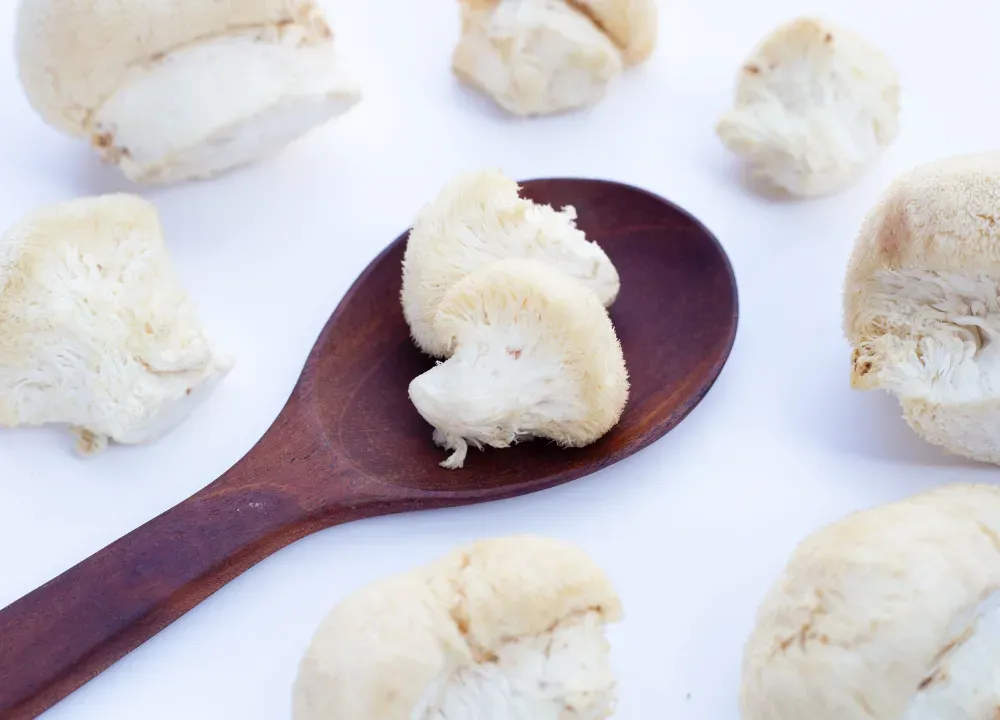
V. Common Issues During the Growing Process
A. Contamination
Preventing contamination is a crucial aspect of mushroom cultivation, including the growth of Lion's Mane mushrooms. Here are some tips to help prevent contamination:
1. Cleanliness: Maintain a clean and sterile environment when handling your cultivation setup. This includes wiping down all tools and surfaces with rubbing alcohol before doing any mycological work.
2. Sterilization: Sterilization is key in mushroom cultivation. One effective method is using a pressure canner that ensures thorough, high-temperature sterilization of your substrate.
3. Avoid Direct Handling: Try to minimize direct contact with the substrate and the interior of your growing bags or containers. Always ensure your hands are well-cleaned if you have to handle these elements.
4. Monitor Humidity: Growers can prevent certain molds like cobweb mold by lowering the humidity in their grow chambers and monotubs through careful monitoring.
5. Proper Sealing: After inoculating your substrate with Lion's Mane spawn, seal your substrate and spawn mixture in a breathable bag or container, and leave it in a warm, dark place to incubate.
6. Regular Checks: Keep an eye on your setup for signs of contamination, such as strange colors, smells, or growth patterns. Early detection can prevent the spread of contaminants.
Remember, even with the best practices, contamination can sometimes occur. Don't be discouraged if this happens – learning from setbacks is part of the process of becoming a successful mushroom cultivator.
B. Over and Underwatering
Maintaining the correct watering levels when growing Lion's Mane mushrooms is crucial, as both overwatering and underwatering can affect their growth. Here's what you need to know:
Overwatering: Overwatering can lead to several problems, including bacterial blotch, which can cause yellowish discoloration and poor mushroom growth. It's important to regulate the amount of water you provide to your mushrooms. A good rule of thumb is to mist the inside of the "grow tent" twice a day, and when you see mushrooms, only spray the inside of the tent.
A squeeze test can help gauge if too much water is being used. Slightly squeeze your substrate - only a few drops of water should come out. If too much water comes out, it's too wet.
Underwatering: On the other hand, mushrooms contain 80%-90% water, so it's vital to ensure they have enough moisture to prevent them from drying out. You should aim to water them at least twice daily.
Lion's Mane requires good airflow and high humidity in the fruiting stage. Therefore, maintaining consistent watering is necessary to keep humidity levels high.
In conclusion, maintaining the right balance of watering is key to successful Lion's Mane cultivation. Careful observation and adjustment based on your specific growing conditions can go a long way in ensuring healthy and abundant growth.
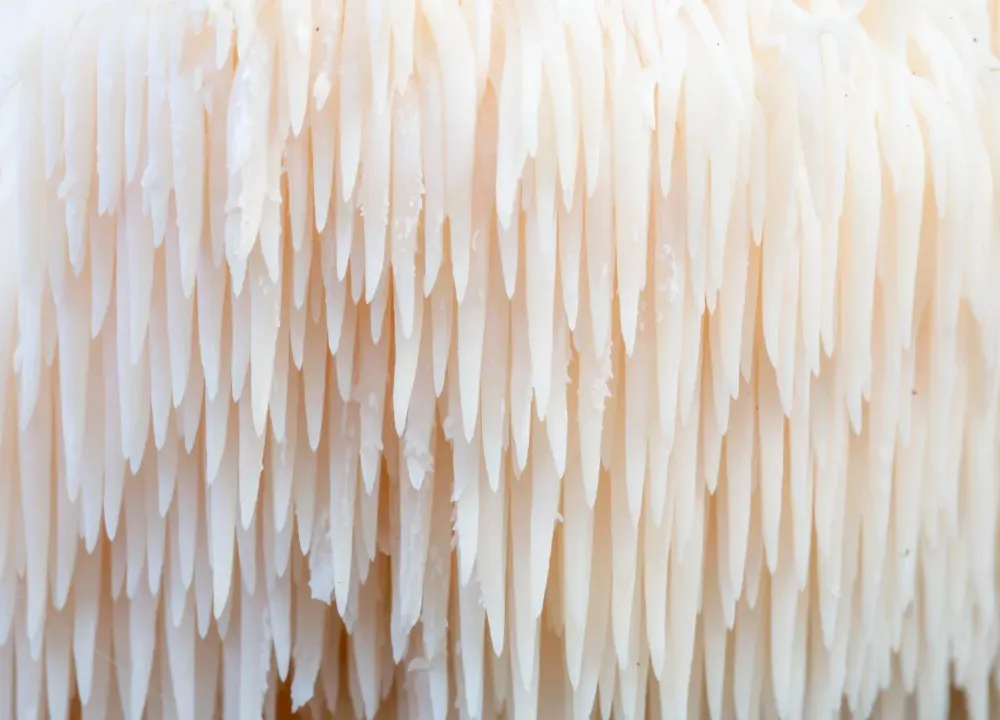
C. Temperature control
Growing Lion's Mane mushrooms requires a specific range of environmental conditions, and temperature plays a crucial role. Here's what you need to know:
Ideal Temperature Range: The optimal temperature for growing Lion's Mane mushrooms is between 60-75°F (15-24°C). This temperature range is ideal for both the colonization and fruiting stages.
Temperature Fluctuations: Interestingly, Lion's Mane mushrooms require some temperature fluctuation to grow well. A temperature swing of 6-10°F is necessary for mushroom formation.
Spawn Run Temperature: During the spawn run or the period when the Lion's Mane mycelium colonizes the substrate, room temperature (around 70°F or 21°C) is usually suitable.
Remember, maintaining the correct temperature is crucial for successful cultivation. Too high or too low temperatures can hinder growth or potentially kill the mycelium. Regular monitoring and adjustment based on your specific growing conditions can ensure healthy and abundant growth.
D. Poor air circulation
Proper air circulation is crucial for the growth of Lion's Mane mushrooms. Here's how poor air circulation can affect their growth:
1. Stunted Growth: Lack of fresh air can lead to stunted mushroom growth. Lion's Mane mushrooms need a consistent supply of fresh air to grow properly.
2. Poor Fruiting Body Development: Insufficient Free Air Exchange (FAE) can lead to poor development of the fruiting body of the Lion's Mane mushroom.
3. Increased Contamination Risk: Poor air circulation can increase the risk of contamination, such as molds and bacteria, which thrive in stagnant, humid conditions.
4. Reduced Yield: Overall, poor air circulation can reduce the yield of your mushroom crop. Good air exchange ensures that the carbon dioxide produced by the mushrooms is replaced with fresh oxygen, promoting better growth.
To ensure proper air circulation, you can regularly fan your growing area or use a setup with built-in air exchange, like a shotgun fruiting chamber or a monotub with polyfill-stuffed holes for passive air exchange. Some growers also use HEPA-filtered fans for clean air exchange.
VI. Conclusion
A. Summary of the post
Growing Lion's Mane mushrooms at home can be a rewarding endeavor. Here are some general steps on how to grow Lion's Mane mushrooms:
1. Gathering Supplies: The primary supplies you'll need include Lion's Mane mushroom spawn, a growth medium or substrate (usually hardwood sawdust or logs), and a suitable container or bag. Easy DIY kits can be ordered from Amazon:

2. Preparing the Substrate: Sterilize your substrate to eliminate any potential contaminants. This can be done using a pressure cooker or autoclave.
3. Inoculating the Substrate: After sterilization, introduce the Lion's Mane spawn to the substrate. This process is called inoculation.
4. Incubation: Place the inoculated substrate in a warm, dark place to allow the mycelium to colonize the substrate. This stage is known as the incubation period.
5. Fruiting: Once fully colonized, move the substrate to a cooler, well-lit environment with high humidity to encourage fruiting.
6. Harvesting: Lion's Mane mushrooms are ready to harvest when they have grown large, and the edges of their cascading tendrils start to flatten out but are still rounded.
Remember that growing mushrooms requires patience and careful observation. Factors such as temperature, humidity, light, and fresh air exchange all play important roles in the successful cultivation of Lion's Mane mushrooms.
B. Links to additional resources
- https://cascadiamushrooms.com/blogs/cm/everything-you-need-to-know-about-lions-mane-mushrooms
- https://fungi.com/blogs/articles/lions-mane-mushroom-benefits
- https://www.ncbi.nlm.nih.gov/pmc/articles/PMC5987239
- https://www.healthline.com/nutrition/lions-mane-mushroom
- https://www.verywellhealth.com/lions-mane-7500313
- https://www.marthastewart.com/8218903/lions-mane-mushroom-explained
- https://www.forij.co/blogs/mushrooms/lions-mane-mushroom-taste
- https://www.mushroom-appreciation.com/lions-mane.html
- https://cascadiamushrooms.com/blogs/cm/the-lion-s-mane-mushroom-nutrition-profile-and-other-benefits
- https://cannabotech.com/a/s/articles/is-lion-s-mane-mushroom-a-nutritious-superfood
- https://draxe.com/nutrition/lions-mane-mushroom/
- https://www.everydayhealth.com/wellness/potential-health-benefits-of-lions-mane-mushrooms/
- https://www.realsimple.com/lions-mane-mushroom-benefits-7489079
- https://www.ncbi.nlm.nih.gov/pmc/articles/PMC3924982/
- https://www.ncbi.nlm.nih.gov/pubmed/20834180
- https://www.frontiersin.org/articles/10.3389/fphar.2017.00213/full
- https://www.ncbi.nlm.nih.gov/pubmed/28713364
- https://www.ncbi.nlm.nih.gov/pubmed/24266378
- https://www.sciencedirect.com/science/article/pii/S1756464619300313?via%3Dihub
- https://grocycle.com/growing-lions-mane/
- https://us.threespiritdrinks.com/blogs/blog/how-to-grow-lions-mane-mushroom
- https://www.epicgardening.com/growing-lions-mane/
- https://www.myceliumsociety.com/assets/pdfs/ultimate_guide_to_lions_mane/lions_mane_ultimate_guide_00.pdf
- https://thekonnexion.com/how-to-grow-lions-mane-mushrooms/
- https://www.gourmetmushroom.co.uk/lions-mane-mushroom-cultivation/
- https://learn.freshcap.com/growing/candidates-for-cultivation-the-lions-mane-mushroom/
- https://www.rootmushroom.com/about1-cccx
- https://myctyson.com/growing-lions-mane-hericium-erinaceus-mushrooms/
- https://urbanspore.com.au/how-to-grow-mushrooms/growing-lions-mane/
- https://circularharvest.ca/pages/lions-mane-instructions
- https://fatmoonmushrooms.com/pages/lions-mane-grow-kit-instructions
- https://doubleblindmag.com/growing-lions-mane-mushrooms/
- https://www.forestwildlife.org/how-to-store-lions-mane-mushrooms/
- https://healthbymushrooms.com/how-to-store-lions-mane-mushrooms/
- https://lifehacker.com/how-to-choose-store-and-eat-lions-mane-mushrooms-1845358782
- https://joybileefarm.com/lions-mane-mushroom-powder/
- https://learn.freshcap.com/growing/preventing-contamination-when-growing-mushrooms/
- https://urbanspore.com.au/how-to-grow-mushrooms/how-to-grow-lions-mane/
- https://little-acre.groovehq.com/help/how-to-avoid-mould-contamination-when-growing-mushrooms
- https://northspore.com/blogs/the-black-trumpet/common-contamination-in-mushroom-cultivation
- https://www.shroomery.org/forums/showflat.php/Number/23912811
- https://www.reddit.com/r/mycology/comments/rraomk/over_watered_lions_mane_or_different_species/
- https://mushroomflow.com/can-mushrooms-be-overwatered/
- https://bestcompostguide.com/how-to-grow-lions-mane-mushrooms/
- https://www.meritmushrooms.co.uk/post/how-to-grow-lion-s-mane-mushrooms-at-home-fast-uk-complete-step-by-step-guide-and-product-links
- https://www.shroomstop.ca/lionsmane
- https://www.fungi.com/product-detail/product/the-lions-mane-patch.html
- https://northspore.com/products/grow-your-own-lions-mane
- https://www.amazon.com/Gallboys-Mushroom-Kits-Lions-Mane/dp/B017M6R9P8
- https://farwestfungi.com/products/lions-mane-mushroom-grow-kit
- https://cascadiamushrooms.com/products/lions-mane-grow-kit
- https://www.henosismushrooms.com/shop/lionsmane









